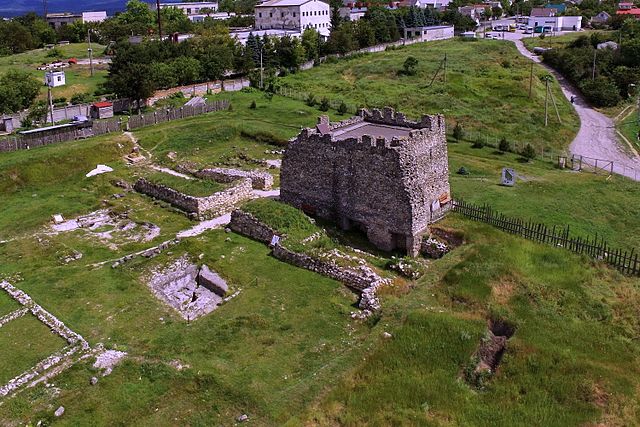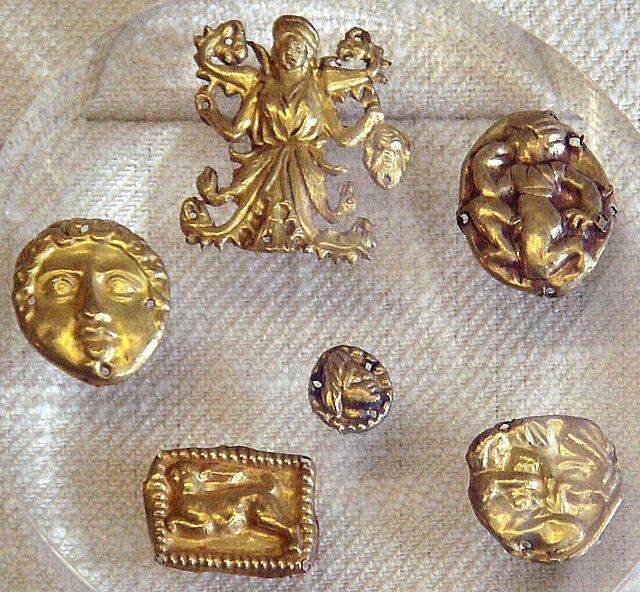Scythian Neapolis, also known as Kermenchik, was an Iranic settlement that existed in the Crimean Peninsula from the end of the 3rd century BC until the second half of the 3rd century AD. It was previously considered a town of the Tauric Chersonesus, and was mentioned by Strabo as being the fortress and palace where Scythian kings resided. It is regarded as the capital of the Late Scythian Kingdom and the capital of Great Scythia. The archaeological ruins sit on the outskirts of the present-day Simferopol. This city was the centre of Crimea's Scythian tribes, led by Skilurus and Palacus. The town ruled over a small kingdom, covering the lands between the lower Dnieper and Crimea. Between the end of the 4th century BC and the beginning of the 3rd century BC, historians suggest that the Kizil-Koba culture occupied the area of Scythian Neapolis before any Scythian artefacts were found; Neapolis was destroyed by the Goths halfway through the 3rd century AD. This settlement was first excavated in 1945 by Schultz and Golovkina.

2016 photograph of the supposed tomb of Skilurus
Scythian Warriors
Indo-Scythians pushing the Greek god Dyonisos with Ariadne in a chariot.
Scythian Neapolis, 2008
The recorded history of the Crimean Peninsula, historically known as Tauris, Taurica, and the Tauric Chersonese, begins around the 5th century BCE when several Greek colonies were established along its coast, the most important of which was Chersonesos near modern day Sevastopol, with Scythians and Tauri in the hinterland to the north. The southern coast gradually consolidated into the Bosporan Kingdom which was annexed by Pontus and then became a client kingdom of Rome. The south coast remained Greek in culture for almost two thousand years including under Roman successor states, the Byzantine Empire (341–1204), the Empire of Trebizond (1204–1461), and the independent Principality of Theodoro. In the 13th century, some Crimean port cities were controlled by the Venetians and by the Genovese, but the interior was much less stable, enduring a long series of conquests and invasions. In the medieval period, it was partially conquered by Kievan Rus' whose prince Vladimir the Great was baptised at Sevastopol, which marked the beginning of the Christianization of Kievan Rus'. During the Mongol invasion of Europe, the north and centre of Crimea fell to the Mongol Golden Horde, and in the 1440s the Crimean Khanate formed out of the collapse of the horde but quite rapidly itself became subject to the Ottoman Empire, which also conquered the coastal areas which had kept independent of the Khanate. A major source of prosperity in these times was frequent raids into Russia for slaves.

Coin from Chersonesus with Artemis, deer, bull, club and quiver (c. 300 BC)
Bone and tool from the Buran-Kaya caves.
The Scythian treasure of Kul-Oba, in eastern Crimea.
Orestes, a curly-haired young man in a Greek robe, is seated before a small group of trees, clasping the right hand of another Greek man, who is standing with his left hand on the seated man's arm. Standing to their left but in the right of the painting is a tall, robed woman of elegant bearing. Behind her are two columns of a classic Greek temple. Low mountains are in the far background.








